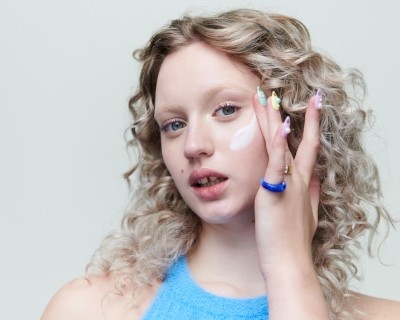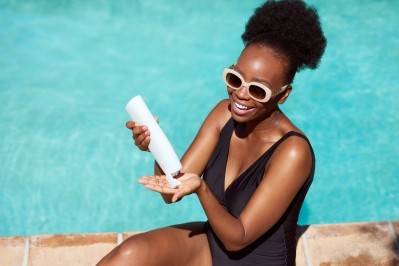Contents
- 1 9 ‘beauty-from-within’ brands to watch
- 2 WGSN: Transformative Teal “Super relevant for the beauty industry”
- 3 Cosmetics innovation in the Middle East & Africa
- 4 What skin care products are in demand in the UK and Europe?
- 5 Proving skin care product efficacy in the future
- 6 Is the big skin care switch off happening for Gen Z?
- 7 Hair care trends: what’s hot in 2024?
- 8 L’Oréal buys a stake in Galderma
- 9 5 biotech cosmetics companies to watch
- 10 How sunscreen testing is about to transform
- 11 5 sun care trends for darker skin tones
Image: Getty What have been some of the key issues and topics affecting our industry over the past three months? We’ve rounded up the 10 most-read stories between July and September…
9 ‘beauty-from-within’ brands to watch
As more consumers realise topical cosmetics have their limitations, beauty and personal care brands are putting a focus on an inside-out approach, which aims to improve internal health and wellness and therefore boost beauty.
Many beauty and personal care shoppers who once invested in pricey skin creams or treatments are now turning to ingestible beauty products, such as collagen peptides, biotin, omega-3 fatty acids, and vitamins, to support skin elasticity, reduce inflammation, and improve overall skin health.
Hair and scalp health is also increasingly in the limelight in terms of edible beauty product innovation. As is the link between the microbiome and health and beauty. After all, a well-balanced gut microbiome supports digestive health, and improved digestion can lead to clearer skin and reduced issues like acne and eczema.

WGSN: Transformative Teal “Super relevant for the beauty industry”
Forecasting agency WGSN is predicting that 2026 will be “the year of redirection”, marked by increased consumer demand for greater ecological responsibility, hence why it has selected Transformative Teal to be its colour of the year.
According to the head of colour at WGSN Urangoo Samba, it “aligns with the eco accountability that will increasingly be demanded by consumers.”
The trend forecasting agency said that this shift will influence not only consumer behaviour, with a growing focus on the future, but also production, with future consumer needs and desires reflected in colour choices.
“It is a fluid fusion between blue and green that recognises the diversity of nature and ‘earth first’ mindset,” Samba continued.
“This blue-green colour is cooling, calming, restorative, with transformative and regenerative character, inspired by redirecting our efforts to find collective and novel solutions for our planet,” she said, before adding: “2026 is really going to be the year of redirection.”
Cosmetics innovation in the Middle East & Africa
The Middle Eastern and African markets have long been grouped together and talked about as the markets of the future in terms of expansion, and it seems that the wheels are truly in motion now.
Both markets are hotspots for beauty innovation and expansion. We explored why European cosmetics brands are focused on these for the future…

What skin care products are in demand in the UK and Europe?
Finnish beauty technology company Revieve revealed findings of its Skincare Landscape 2024 and Beyond report, which shows what skincare shoppers are searching for in specific regions of the world.
The Helsinki-based company, which offers a tool that personalises search and shopping experiences, analysed data from over 150 brands and retailers to identify consumer behaviours and preferences from the first quarter of 2024.
According to the new report, the global beauty and skin care industry is “experiencing a transformative shift that will shape how retailers and brands cater to the diverse range of consumer needs and demands across the globe.”
Proving skin care product efficacy in the future
As more beauty shoppers demand proof of product efficacy, we spoke to the CEO of beauty tech company Cydolia about how its recent tech advancements can help R&D and marketing experts in the product development process.
The Paris-based company, which specialises in 3D acquisition, analysis, and reconstruction of skin properties, is an expert in its field and has worked alongside leading industry players such as L’Oréal Group, Chanel, and Beiersdorf.
Most recently, it released a video that showcases its 3D simulation and visualisation technology, based on clinical trials data, which it said can help cosmetic brands “precisely showcase the benefits of their products across optical, metric, and mechanical skin parameters.”
Is the big skin care switch off happening for Gen Z?
Are young people using fewer skin care products because they are overwhelmed by the sheer amount of choice?
Many new consumer reports and surveys are pointing to the fact that consumers of all age groups are adopting a much more practical attitude when it comes to splashing out on new skin care products.
It appears that more people are demanding proof of efficacy before they part with their cash and buy a new product, and more are turning to dupes with a belief that many are just as good as the ‘real’ version, therefore making these products ‘better value for money’.

Hair care trends: what’s hot in 2024?
What do hair care shoppers want right now? New research reveals the most popular brands, products, celebs and influencers that people across the globe have searched for this year…
L’Oréal buys a stake in Galderma
French multinational L’Oréal acquired a 10% stake of Swiss derma skin and aesthetics business Galderma Group AG from Sunshine SwissCo AG (a consortium led by EQT), Abu Dhabi Investment Authority (ADIA), and Auba Investment Pte. Ltd. for a non-disclosed sum.
The two businesses will also work in a strategic scientific partnership: fusing Galderma’s dermatological solutions with L’Oréal’s skin biology, diagnostic tools and evaluation methods expertise.
According to Galderma, the partnership will be “focused on complementary research projects which could develop advanced, future-proof technologies with direct applications in the field of dermatology.”
5 biotech cosmetics companies to watch
As biotechnology becomes more prominent in sourcing ingredients for cosmetics formulations, we reveal some of the pioneering businesses that are disrupting the cosmetics ingredients sector…

How sunscreen testing is about to transform
Clinically testing sun protection products before they can be brought to market has never been a straightforward process. It’s a highly regulated category with a multitude of factors and claims that need to be tested, including Sun Protection Factor: (SPF), UVA Protection Factor (UVAPF), Critical Wavelength (CW), and Water Resistance (WR), to name a few.
Fortunately, these procedures are globally harmonised by the ISO (International Organization for Standardization) standard.
The methods used to test SPF in suncare products have long faced multiple criticisms, and for the past three decades experts have been working on an alternative. This is now in the final stages of ISO approval and is set to overhaul the way we test sun care products in the future…
5 sun care trends for darker skin tones
Despite a growing awareness among those with darker skin tones about the risks of not wearing sun protection, the myth that black skin is immune to sun damage persists.
However, sun protection is increasingly becoming an integral part of the skincare routines of those with melanin-rich skin. What’s happening in this innovative sector?


